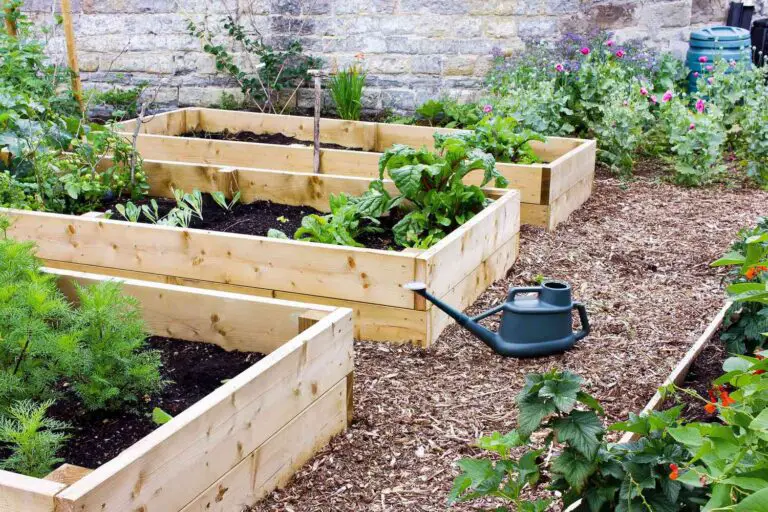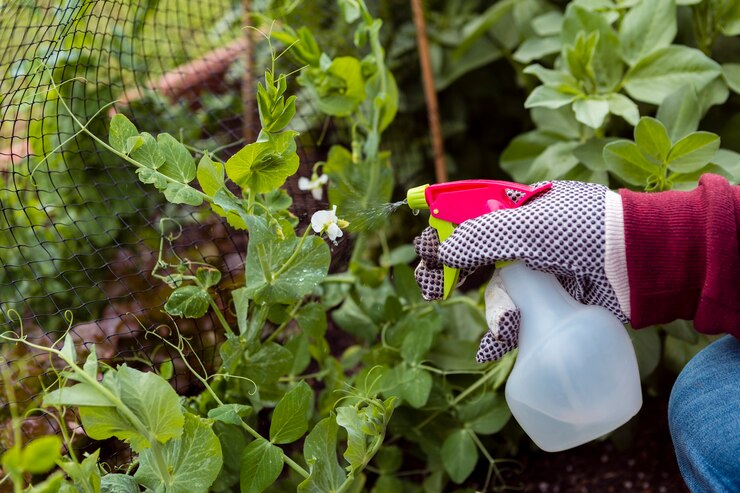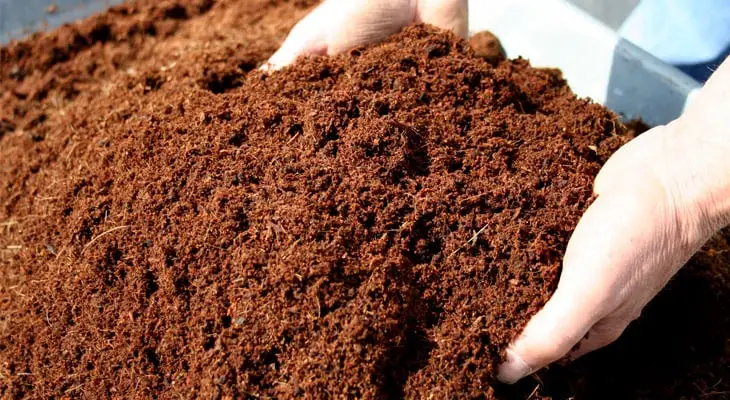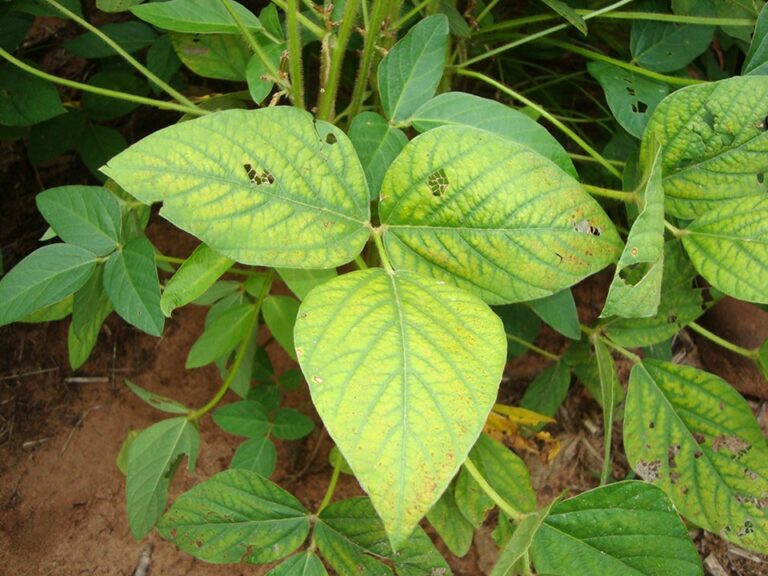Blight Identification and Control: Protecting Your Plants
Table of Contents
Common Signs of Plant Blight
Plant blight is a common problem that many gardeners encounter. Recognizing the signs early on is crucial for effective control and prevention. One of the most apparent signs of plant blight is discoloration. Leaves that turn yellow, brown, or black may indicate the presence of blight. These discolorations can start as small spots and spread rapidly, often leading to leaf wilting and eventual death of the plant. It’s important to note that not all leaf discoloration is caused by blight, so proper identification is essential.
Another common sign of plant blight is the presence of lesions on stems, fruits, or leaves. These lesions can vary in size, shape, and color, depending on the type of blight affecting the plant. They may appear as dark spots, sunken areas, or even raised bumps. Over time, these lesions can expand and merge, causing significant damage to the plant tissues. Regularly inspecting plants for lesions can help detect blight at an early stage, allowing for prompt action to be taken.

In addition to discoloration and lesions, other signs of plant blight may include stunted growth, distorted or deformed leaves, and sudden plant collapse. It’s important to be vigilant and keep a close eye on your plants to catch any signs of blight before it becomes a widespread issue. Early detection is the key to preventing the spread of blight and protecting the overall health of your garden.
Identifying Different Types of Plant Blight
Blight is a common problem for gardeners and plant enthusiasts. It can affect a wide range of plants, from vegetables and fruits to ornamental flowers and trees. Identifying the different types of plant blight is crucial for effective management and prevention.
One common type of plant blight is fungal blight. Fungal blight often presents as dark spots or lesions on leaves, stems, and fruits. These spots may have fuzzy or powdery growth, indicating the presence of fungal spores. Fungal blight can spread rapidly in wet and humid conditions, so it is important to monitor plants closely, especially during periods of high humidity or after rainfall.
Other types of plant blight can be caused by bacteria or viruses. Bacterial blight often leads to wilting, browning, or dead spots on leaves, stems, or blossoms. It can also cause cankers or galls on plants, affecting their overall health and vigor. Viral blight, on the other hand, may cause stunted growth, yellowing or mottling of leaves, and distorted or deformed fruits. These symptoms can vary depending on the specific virus affecting the plant. It is important to note that viral blight cannot be treated, and infected plants should be removed to prevent further spread.

Overall, by recognizing the different signs and symptoms of plant blight, gardeners can take appropriate action to minimize its impact and protect their plants. Early identification and monitoring are key to preventing the spread of blight and ensuring the health and vitality of your garden.
Symptoms and Causes of Blight in Plants
Signs of plant blight can vary depending on the type of blight and the plant species affected. In general, blight symptoms often include wilting or drooping leaves, lesions or spots on leaves or stems, discoloration or yellowing of leaves, stunted growth, and premature leaf drop. These visible signs of plant blight can be indicative of underlying issues such as fungal or bacterial infections, nutrient deficiencies, environmental stressors, or poor plant health.
The causes of plant blight can be multifactorial and can vary depending on the specific blight type. Fungal blights, for example, are commonly caused by fungal pathogens that thrive in wet and humid conditions. Bacterial blights, on the other hand, are typically caused by bacteria that enter plants through wounds or natural openings. Other causes of plant blight can include viral infections, insect infestations, improper watering or irrigation practices, nutrient imbalances, and poor soil fertility. Identifying the specific cause of blight is crucial in developing an effective management strategy to control and prevent further spread of the disease.
Early Detection: The Key to Effective Blight Control
Early detection is crucial when it comes to effective blight control in plants. By identifying symptoms and signs of blight in its early stages, gardeners can take timely action to prevent the spread of the disease and minimize its impact on plant health. Early detection allows for targeted treatments and interventions, increasing the likelihood of successful control and reducing the need for more drastic measures.
One of the key ways to detect blight early is through regular plant inspections. By closely monitoring plants, especially during periods of vulnerability such as high humidity or temperature fluctuations, gardeners can catch the initial signs of blight, such as leaf discoloration, wilting, or lesions. These inspections should encompass the entire garden or growing area, as blight can easily spread from one plant to another. Engaging in proactive measures like this can significantly mitigate the risk of blight taking hold and causing irreversible damage.
The Importance of Regular Plant Inspections
Regular plant inspections are a crucial aspect of maintaining a healthy garden. By regularly inspecting your plants, you can identify and address potential issues before they escalate into full-blown problems. This proactive approach not only helps to preserve the vitality of your plants but also saves you time, effort, and money in the long run.
During a plant inspection, it is important to carefully examine each plant for any signs of distress, such as wilting, discoloration, or unusual growth patterns. Pay close attention to the leaves, stems, and roots, as these are often the first areas affected by various plant diseases and pests. Additionally, inspect the surrounding soil for any signs of nutrient deficiencies or excessive moisture, both of which can contribute to plant stress and susceptibility to blight. By regularly conducting these visual inspections, you can catch any signs of trouble early on and take immediate action to mitigate the risk of blight in your garden.
Best Practices for Preventing Blight in Your Garden
Preventing blight in your garden requires a proactive approach and the implementation of best practices to keep your plants healthy and thriving. One of the key strategies is promoting good sanitation practices. This involves removing any diseased plants or plant parts promptly to prevent the spread of blight. Regularly clean and sanitize your gardening tools to minimize the risk of contamination.
Another important practice is crop rotation. Blight-causing pathogens can build up in the soil over time and affect the same plant species year after year. By rotating your crops, you disrupt the disease cycle and reduce the chances of blight development. Plan your garden layout carefully to ensure that plants from the same family are not grown in the same area for consecutive growing seasons.
In addition, maintaining optimal plant spacing is crucial for blight prevention. Overcrowding plants can create a favorable environment for disease development, as it restricts airflow and promotes moisture retention. Give your plants enough space to thrive and ensure proper ventilation to minimize the risk of blight.
By following these best practices, you can significantly reduce the risk of blight in your garden and promote the overall health of your plants. However, it is important to remember that prevention is not foolproof, and blight can still occur despite your best efforts. In the following sections, we will explore additional strategies for early detection and effective blight control to enhance your garden’s defenses against this common plant disease.
Choosing Resistant Plant Varieties
Choosing resistant plant varieties is an essential strategy in preventing blight and maintaining the health of your garden. Resistant varieties have been specifically bred to possess genetic traits that enable them to resist particular strains of blight-causing pathogens. By selecting and cultivating these varieties, you can significantly reduce the risk of blight outbreaks and the subsequent devastation they can cause to your plants.
| Aspect | Considerations | Example |
|---|---|---|
| Target | Pests, diseases, environmental stresses (drought, heat, cold) | Tomatoes resistant to late blight, corn resistant to corn borer, roses resistant to black spot |
| Resistance type | Tolerance: withstands damage; Vertical: specific gene-for-gene resistance (can be overcome by pathogens); Horizontal: non-specific, multi-gene resistance (more durable) | Wheat tolerant to drought, apple with vertical scab resistance (Vr genes), rice with horizontal blast resistance |
| Information sources | Seed catalogs, online resources (USDA, extension services), local nurseries | Seed catalog listing resistance codes, USDA website with variety trials, nursery staff with local knowledge |
| Selection factors | Desired traits (taste, size, color, yield), adaptation to local climate, level of resistance needed, cost | Choosing a tomato variety with both good disease resistance and desired flavor, selecting a drought-tolerant grass for a hot, dry climate, prioritizing high resistance for high-value crops |
| Benefits | Reduced pesticide use, improved plant health and yield, lower production costs, environmental sustainability | Fewer chemicals applied, healthier crops with less crop loss, potential cost savings on pesticides and labor, positive impact on soil and water quality |
| Limitations | Not absolute immunity, resistance can break down over time, limited variety choices compared to non-resistant options | No guarantee plants won’t get sick, need for integrated pest management (IPM) practices, may not find perfect variety with all desired traits |
| Additional notes | Look for multi-resistant varieties, consider companion planting and other cultural practices for pest control, consult experts for specific recommendations | Combine resistant varieties with other IPM strategies, diversity in gardens can deter pests, seek advice from local agricultural extension services |
One key advantage of choosing resistant plant varieties is their ability to naturally defend against blight without the need for excessive chemical treatments. These varieties have been developed through careful breeding, often incorporating genes from wild or naturally resistant plants. This selective breeding process aims to enhance the plants’ disease-fighting abilities, allowing them to withstand infections that would otherwise decimate more susceptible varieties. As a result, you can enjoy the benefits of healthier plants without compromising environmental sustainability or increasing chemical usage in your garden.
Proper Planting Techniques for Blight Prevention
Proper planting techniques play a crucial role in preventing blight and maintaining the health and vitality of your garden. When considering blight prevention, it is essential to focus on practices that create an unfavorable environment for blight-causing pathogens.
Firstly, selecting the right location for planting is vital. Opt for a well-drained area with good air circulation and ample sunlight. These conditions help to deter the growth and spread of blight-causing pathogens. Additionally, avoid planting susceptible plant varieties in areas where blight has been a recurring problem. By choosing resistant plant varieties, you can significantly reduce the risk of blight affecting your garden.
Another key aspect is planting density. Proper spacing between plants allows for better air circulation, reducing humidity levels and minimizing the chances of blight development. When placing your plants, ensure they are adequately spaced based on the specific recommendations for each plant variety.
Incorporating healthy soil practices is equally important. Before planting, it is beneficial to enrich the soil with organic matter, such as compost. This not only improves drainage but also enhances the overall health and disease resistance of plants. Additionally, maintaining optimal soil pH levels and avoiding excessive nitrogen fertilization can help prevent conditions favorable to blight development.
By implementing these proper planting techniques, you can create a garden environment that minimizes the risk of blight and promotes the long-term health and productivity of your plants. However, blight prevention is not just limited to planting techniques; it is a comprehensive approach that also includes other critical factors. In the subsequent sections of this article, we will delve deeper into other strategies and practices that can aid in effectively controlling and preventing blight in your garden.
Soil Management Strategies to Reduce Blight Risk
Soil management plays a crucial role in reducing the risk of blight in plants. By implementing effective strategies, gardeners can create a healthy and disease-resistant environment for their plants. Here are some key techniques to consider:
1. Crop Rotation: Planting different crops in the same area each year can help break the cycle of blight-causing pathogens. This practice disrupts the buildup of specific pathogens in the soil, reducing the risk of blight. Rotate crops in a way that avoids planting the same family of plants in the same spot for consecutive seasons.
2. Proper Drainage: Blight thrives in moist conditions, so it’s essential to ensure proper soil drainage. Poorly drained soil leads to waterlogged roots, weakening the plants’ defense against diseases. Incorporating organic matter like compost into the soil can improve both drainage and soil structure. Additionally, planting in raised beds or slopes can aid in water drainage, minimizing the risk of blight.
Implementing these soil management strategies can significantly reduce the risk of blight in your garden. By following these practices, you not only create a healthier environment for your plants but also contribute to the long-term success of your garden. Stay tuned for more tips on preventing and controlling blight on other aspects of gardening.
Watering and Irrigation Practices for Healthy Plants
Watering and irrigation practices play a crucial role in maintaining the health and vitality of your plants. Proper watering techniques not only ensure that your plants receive the necessary moisture for growth, but they also help in preventing blight and other diseases. It is important to understand the specific watering needs of different plant varieties and adjust your irrigation schedule accordingly.
One key principle to remember is that plants require deep, thorough watering rather than frequent shallow watering. This encourages the development of a robust root system, which in turn enables plants to better absorb nutrients and resist diseases. Avoid light, superficial watering as it only wets the surface soil and encourages the growth of shallow roots.
To determine when to water, it is advisable to monitor the moisture levels of the soil. Insert your finger about an inch deep into the soil, and if it feels dry, it’s time to water. However, be cautious not to overwater your plants, as excessive moisture can create an environment favorable for blight development. The frequency of irrigation will depend on various factors such as plant type, weather conditions, and soil type. Consider using a drip irrigation system or soaker hoses to deliver water directly to the base of the plants, minimizing evaporation and optimizing water absorption.
In the next section, we will discuss the importance of nutrition in plant disease resistance and how providing the right nutrients can help fortify your plants against blight and other ailments.
The Role of Nutrition in Plant Disease Resistance
Proper nutrition plays a crucial role in enhancing the disease resistance of plants. Just like humans, plants need a balanced diet to stay healthy and strong. When plants receive the necessary nutrients in the right amounts, they are better equipped to defend themselves against diseases and pests.
One essential nutrient for boosting plant immunity is nitrogen. Nitrogen aids in the production of amino acids, which are the building blocks of proteins. Proteins are vital for various biological processes, including plant defense mechanisms. Additionally, nitrogen helps plants produce enzymes that can detoxify harmful substances and pathogens, further protecting them from diseases.
| Nutrient | Role in Disease Resistance | Mechanism | Example |
|---|---|---|---|
| Nitrogen (N) | – Moderate levels can activate defense mechanisms. – Excess can increase susceptibility to some diseases. | – Affects hormone balance for defense response. – Can influence plant tissue strength. | – Adequate N promotes resistance to fungal diseases in wheat. – Excess N makes tomato plants more susceptible to bacterial wilt. |
| Phosphorus (P) | – Essential for cell wall strength and energy production. | – Strong cell walls act as physical barriers to pathogens. – Energy needed for defense responses. | – P deficiency weakens cell walls, increasing susceptibility to fungal diseases. – Adequate P promotes resistance to rust in corn. |
| Potassium (K) | – Regulates water balance and enzyme activity. – Involved in signal transduction for defense responses. | – Maintains cell turgor, making it harder for pathogens to penetrate. – Enzymes help in defense compound production. | – K deficiency makes plants more susceptible to fungal and bacterial diseases. – Adequate K promotes resistance to powdery mildew in cucumber. |
| Calcium (Ca) | – Strengthens cell walls and membranes. – Activates defense enzymes. | – Calcium ions form physical barriers. – Enzymes degrade pathogen cell walls. | – Ca deficiency weakens cell walls, increasing susceptibility to fungal diseases. – Adequate Ca promotes resistance to late blight in potato. |
| Magnesium (Mg) | – Essential for chlorophyll production and photosynthesis. – Involved in enzyme activity for defense responses. | – Healthy photosynthesis provides energy for defense. – Enzymes involved in stress response and toxin production. | – Mg deficiency can make plants more susceptible to fungal and bacterial diseases. – Adequate Mg promotes resistance to downy mildew in grapevine. |
| Zinc (Zn) | – Involved in protein synthesis and enzyme activity. – Essential for wound healing. | – Proteins needed for defense compounds and cell wall repair. – Enzymes involved in wound closure and defense signaling. | – Zn deficiency weakens plant defenses against various pathogens. – Adequate Zn promotes resistance to anthracnose in mango. |
Alongside nitrogen, other essential nutrients such as phosphorus and potassium also contribute to plant disease resistance. Phosphorus plays a critical role in energy transfer and storage within plants, enabling them to produce necessary compounds for defense against diseases. Potassium, on the other hand, enhances overall plant health and vigor, making them less susceptible to infections.
It is important to note that while proper nutrition strengthens plant resistance, excessive nutrient levels can actually weaken plants and make them more susceptible to diseases. Therefore, it is crucial to maintain a balanced nutrient supply to ensure optimal plant health and defense against blight.
Integrated Pest Management for Blight Control
Integrated Pest Management (IPM) is a holistic approach to blight control that focuses on preventive measures and minimizes the use of chemical pesticides. By incorporating multiple strategies, gardeners can effectively manage blight while also protecting the ecosystem and ensuring the long-term health of their plants.
One of the key elements of IPM is proper sanitation practices. Removing and destroying infected plant debris can prevent the spread of blight-causing pathogens. Thoroughly cleaning gardening tools and equipment also helps to prevent contamination. Additionally, practicing crop rotation and avoiding planting susceptible plants in the same location year after year can disrupt the life cycle of blight pathogens and reduce their populations.
Another important aspect of IPM is the use of beneficial insects and organisms. These natural predators can help control blight by preying on the pests responsible for spreading the disease. For example, ladybugs and lacewings feed on aphids, which are known carriers of certain blight-causing pathogens. Introducing these beneficial organisms into the garden can provide a natural and sustainable form of blight control.
In conclusion, Integrated Pest Management offers a comprehensive approach to blight control that considers both prevention and intervention methods. By focusing on sanitation practices, crop rotation, and the use of beneficial organisms, gardeners can effectively manage and reduce the impact of blight on their plants. Embracing these strategies not only promotes the health and productivity of plants but also contributes to a more sustainable and environmentally friendly gardening practice.
Natural and Organic Methods to Combat Blight
Natural and organic methods provide effective alternatives for combatting blight in plants. These methods not only prioritize the health and well-being of your plants, but also minimize negative impacts on the environment. By incorporating these techniques into your gardening routine, you can proactively prevent blight and maintain the vitality of your garden.
One natural approach to blight control is the use of beneficial insects. For instance, ladybugs are natural predators of aphids, which can transmit blight-causing pathogens. By introducing ladybugs into your garden, you can help control aphid populations and reduce the risk of blight. Additionally, encouraging a diverse insect population in your garden can create a balanced ecosystem that naturally controls blight and other plant diseases. Planting flowers and herbs that attract beneficial insects, such as marigolds or dill, can support this endeavor.

Another organic method for combating blight is the application of homemade fungicides. These fungicides are typically made from common household items like baking soda, vinegar, or garlic. For example, a mixture of one teaspoon of baking soda diluted in one liter of water can effectively prevent powdery mildew, a common form of blight. Similarly, a solution made from crushed garlic cloves steeped in water can act as a natural fungicide. These homemade remedies are not only affordable and easy to make, but they also offer a sustainable alternative to chemical-based products.
Incorporating natural and organic methods into your gardening routine can help prevent blight and maintain a healthy garden. By understanding the benefits of beneficial insects and homemade fungicides, you can take a proactive approach to blight control while staying mindful of the environment and the well-being of your plants.
Chemical Treatment Options for Severe Blight Cases
Chemical treatment options can be an effective way to manage severe cases of blight in plants. When other methods have proven ineffective or the blight has spread extensively, chemicals can provide a targeted approach to controlling the disease. It is important to note, however, that chemical treatments should be used as a last resort and only when necessary, as they can have potential risks and environmental impacts.
Fungicides are commonly used chemicals for blight control. These substances work by inhibiting the growth and spread of fungal pathogens, which are often the primary cause of blight. Fungicides can be applied as sprays or dusts and are available in different formulations, such as liquid concentrates or ready-to-use formulations. It is crucial to carefully follow the instructions provided by the manufacturer, including the recommended application rate and frequency. Additionally, proper protective measures must be taken to ensure the safety of the applicator and to minimize any impact on the surrounding environment.
It is worth mentioning that chemical treatments alone cannot provide a long-term solution to blight control. Integrated pest management (IPM) practices, which combine various strategies for prevention, monitoring, and control, should be implemented alongside chemical treatments. This holistic approach ensures a comprehensive and sustainable management of blight, reducing the reliance on chemical treatments and minimizing the potential harm to beneficial organisms and the environment. By combining the use of chemicals with other blight management practices, gardeners can effectively curb the spread of blight and protect their plants.
Developing a Blight Management Plan for Long-Term Protection
Developing a blight management plan is crucial for long-term protection of your plants and garden. By creating a comprehensive strategy, you can effectively prevent and control blight, ensuring the health and vitality of your plants. Here are some key steps to consider when developing your plan:
1. Identify and understand the specific blight types: Different types of blight affect plants in various ways. Familiarize yourself with the common signs, symptoms, and causes of blight to accurately diagnose any issues that may arise. This knowledge will allow you to take targeted and effective actions against blight.
2. Implement preventive measures: Prevention is always better than cure when it comes to blight. Incorporate best practices for preventing blight into your gardening routine, such as properly spacing plants, providing adequate air circulation, and using clean gardening tools. These measures reduce the risk of blight and create a healthy environment for your plants.
3. Regularly inspect your plants: Conducting routine inspections is essential for early detection of blight. By closely monitoring your plants for any signs of disease or distress, you can identify blight in its early stages and promptly take appropriate action. This proactive approach can prevent the spread of blight and minimize its impact on your garden.
4. Practice integrated pest management: Integrated pest management (IPM) is an effective approach to controlling blight. It involves employing a combination of methods, including cultural, biological, and chemical controls, to manage pests and diseases. By integrating various strategies, you can effectively control blight while minimizing the use of harsh chemicals.
By following these steps and tailoring them to your specific gardening needs, you can develop a blight management plan that provides long-term protection for your plants. Remember, prevention, early detection, and a holistic approach are key to successfully combating blight and maintaining a healthy garden.
Note: This list covers a comprehensive range of topics related to blight identification and control, providing guidance for protecting your plants.
Blight is a common and frustrating problem that can wreak havoc on your plants. Whether you’re a seasoned gardener or just starting out, it’s crucial to be equipped with knowledge on identifying and controlling blight. This comprehensive list of topics covers everything you need to know about blight identification and control, providing invaluable guidance for protecting your precious plants.
From understanding the common signs of plant blight to developing a long-term blight management plan, each topic delves into the intricacies of this issue. By learning about different types of plant blight and their symptoms and causes, you’ll be able to accurately identify the specific challenges your plants may face. Early detection is key, and this list emphasizes the importance of regular plant inspections, which can help you catch blight in its initial stages and take appropriate measures to control its spread.
Moreover, the list explores best practices for preventing blight in your garden. By choosing resistant plant varieties and employing proper planting techniques, you can significantly reduce the risk of blight affecting your plants. Soil management strategies, watering and irrigation practices, and nutrition optimization also play a vital role in creating a healthy and resilient plant environment. Additionally, the article discusses integrated pest management techniques, natural and organic methods, and chemical treatment options for severe blight cases, empowering you with a range of tools to combat blight effectively.
With this intricate and thorough guide, you’ll gain the knowledge and understanding necessary to protect your plants from blight. By implementing the professional advice provided in each topic, you’ll be on your way to creating a healthy and thriving garden. So, whether you’re a seasoned green thumb or a novice gardener, make sure to explore this list thoroughly and safeguard your plants from the destructive forces of blight.
What is blight?
Blight refers to a group of plant diseases caused by various pathogens, including bacteria, fungi, and viruses. It can cause rapid deterioration and death of plants.
How can I identify common signs of plant blight?
Common signs of plant blight include wilting, discoloration of leaves or stems, lesions or spots on plant tissues, stunted growth, and the presence of mold or fungal growth.
What are the different types of plant blight?
There are several types of plant blight, including fungal blights like late blight and early blight, bacterial blights like fire blight, and viral blights like tomato mosaic virus.
What are the symptoms and causes of blight in plants?
Symptoms of blight in plants can vary depending on the specific type, but common symptoms include leaf spots, fruit or flower rot, and overall decline in plant health. Causes of blight can include poor cultural practices, environmental conditions, and the presence of pathogens.
How important is early detection for effective blight control?
Early detection is crucial for effective blight control because it allows for prompt intervention and treatment, minimizing the spread of the disease and increasing the chances of saving affected plants.
Why are regular plant inspections important in blight prevention?
Regular plant inspections help in detecting any signs of blight at an early stage, enabling timely action to prevent further spread and damage. It also allows for the identification of potential risk factors and the implementation of preventive measures.
How can I prevent blight in my garden?
Best practices for preventing blight in your garden include practicing good sanitation, selecting resistant plant varieties, implementing proper planting techniques, managing soil health, and maintaining appropriate watering and irrigation practices.
What are resistant plant varieties and how do they help in blight prevention?
Resistant plant varieties are those that have a natural ability to withstand or tolerate specific diseases, including blight. By choosing resistant varieties, you can reduce the risk of blight affecting your plants.
How can soil management strategies help in reducing blight risk?
Implementing soil management strategies such as crop rotation, proper drainage, and adding organic matter can improve soil health, which in turn can reduce the risk of blight development and spread.
What are some natural and organic methods to combat blight?
Natural and organic methods to combat blight include using biological control agents, such as beneficial insects or organisms, practicing crop rotation, using compost or organic mulch, and employing cultural practices like pruning and removing infected plant material.
Are there chemical treatment options for severe blight cases?
Yes, in severe cases of blight, chemical treatments such as fungicides may be necessary. However, it is important to follow the instructions and guidelines provided by manufacturers and to consider the potential environmental impact.
How can I develop a blight management plan for long-term protection?
Developing a blight management plan involves assessing the specific blight risks in your garden, implementing preventive measures, monitoring plant health regularly, and being prepared to take immediate action if blight is detected. It should be a comprehensive and ongoing approach to protect your plants in the long term.

Pallavi Gupta is a burgeoning writer at SouthElMonteHydroponics, blending her passion for data analysis with a keen interest in biotechnology. Currently pursuing a Bachelor’s in Biotechnology at Amity University, Pallavi delves into the intricacies of life sciences while gaining hands-on experience in the exciting world of data analysis. Her unique background provides a fresh perspective on hydroponic farming, as she explores the intersection of biotechnology and sustainable agriculture. Through her writing, Pallavi aims to bridge the gap between data-driven insights and innovative farming practices, inspiring others to harness technology for a greener future.






